How To Group Keywords Automatically With The Serpstat "Clustering" Tool


By the way, the new version of the tool now groups а list of keywords into clusters faster, and you can add up to 50,000 keywords to projects. We have simplified cluster hierarchy and improved report navigation.
Read about the new version of the tool below!
What is keyword clustering?
Let's say you have a list of keywords: iphone 6s, iphone 7, bmx, mountain bike, road bikes and macbook. Here is what you'll get after clusterization the following clusters: {iphone 6s, iphone 7}; {bmx, mountain bike, road bikes}; {macbook}.
Why do you need keyword clustering?
- grouping of the related keywords;
- automatic analysis of a semantic core;
- collecting the right keywords for specific pages;
- keywords distribution across pages for a site's SEO structure;
- searching for website keywords that fall outside all obtained groups.
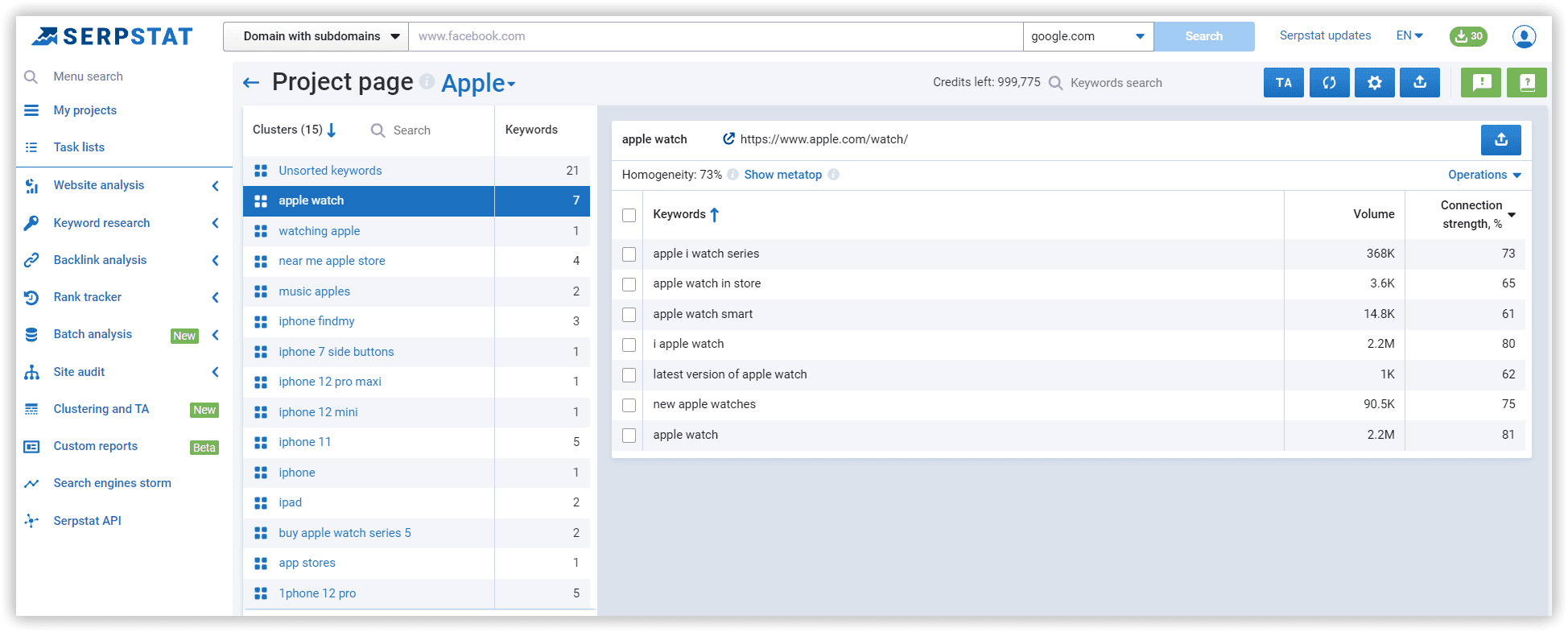
How other keyword clustering tools work?
Here are some problems of such method cases:
What keyword clustering methods Serpstat provides?
Below you can see examples with some pairs of various settings of strength and cluster type that suits different cases.
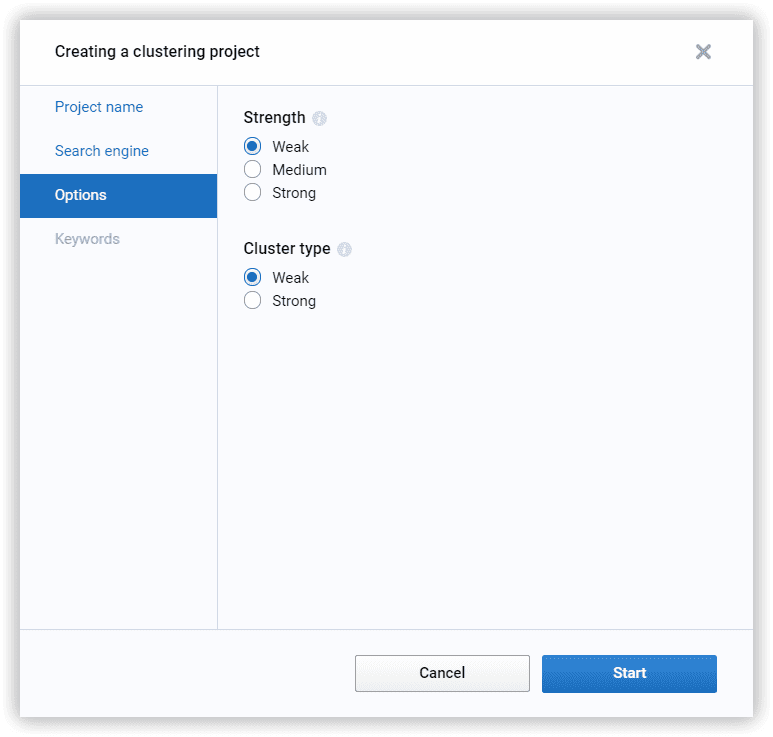
- By setting "Weak" parameter, the keywords with minimum 3 mutual URLs in top-30 search results will be combined into a cluster;
- With "Medium" strength, keywords need to have 8 common URLs;
- "Strong" strength sets 12 common URLs in top-30 search results in a single cluster.
2) There are two cluster types to choose from: "Weak" and "Strong".
"Weak" parameter tells the system that a cluster can be created if at least one pair of keywords has common URLs in top-30 search results (depending on the previous Weak/Medium/Strong strength).
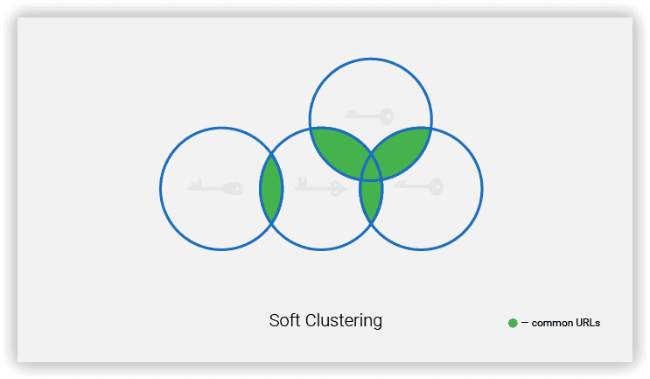

An alternative solution here is to create separate pages for these keywords or move them to one of the created clusters if you consider they belong there.
What clustering method to choose?
If keywords are initially closely related, for example, sneakers of different brands, you should choose "Strong"+"Strong" or "Strong"+"Weak" so that only the closest synonyms are combined into a cluster. As a result, you'll get lots of clusters to use for separate pages or specific categories.
In the case of various products and services, for example, you are collecting keywords for a multi-product store or medical center with a full range of health-care services, it's worth selecting "Weak"+"Weak".
How to use Keyword Clustering tool?
1. Go to the side menu and open "Clustering and TA" tool.


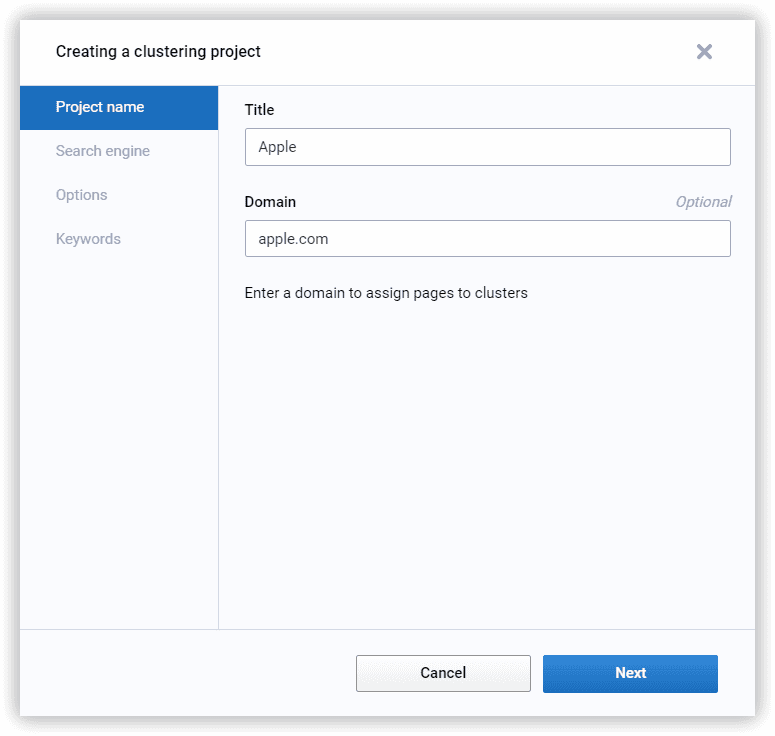
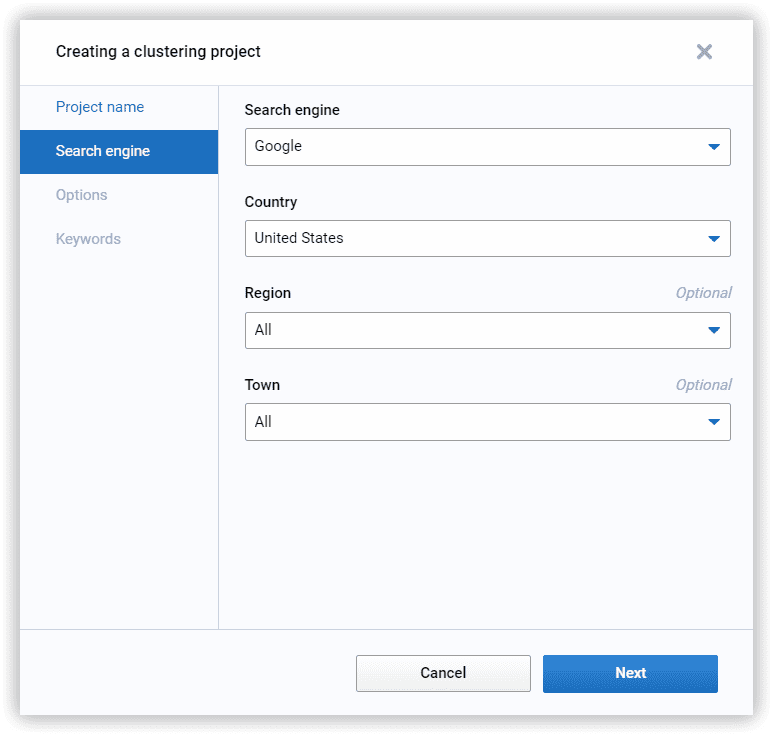
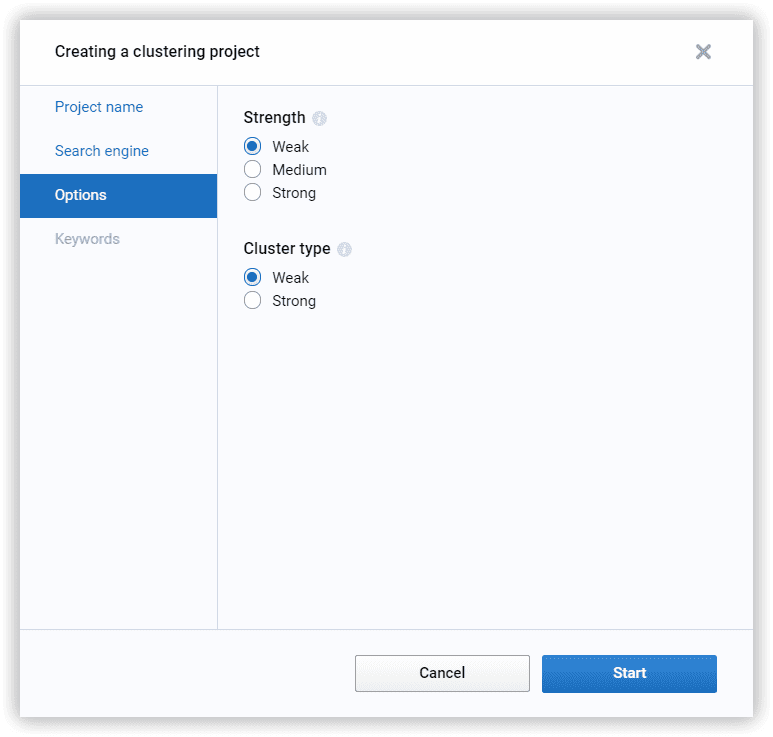
Please note that for 1 keyword you spend 5 credits (you see this information in the calculator of spending credits below).


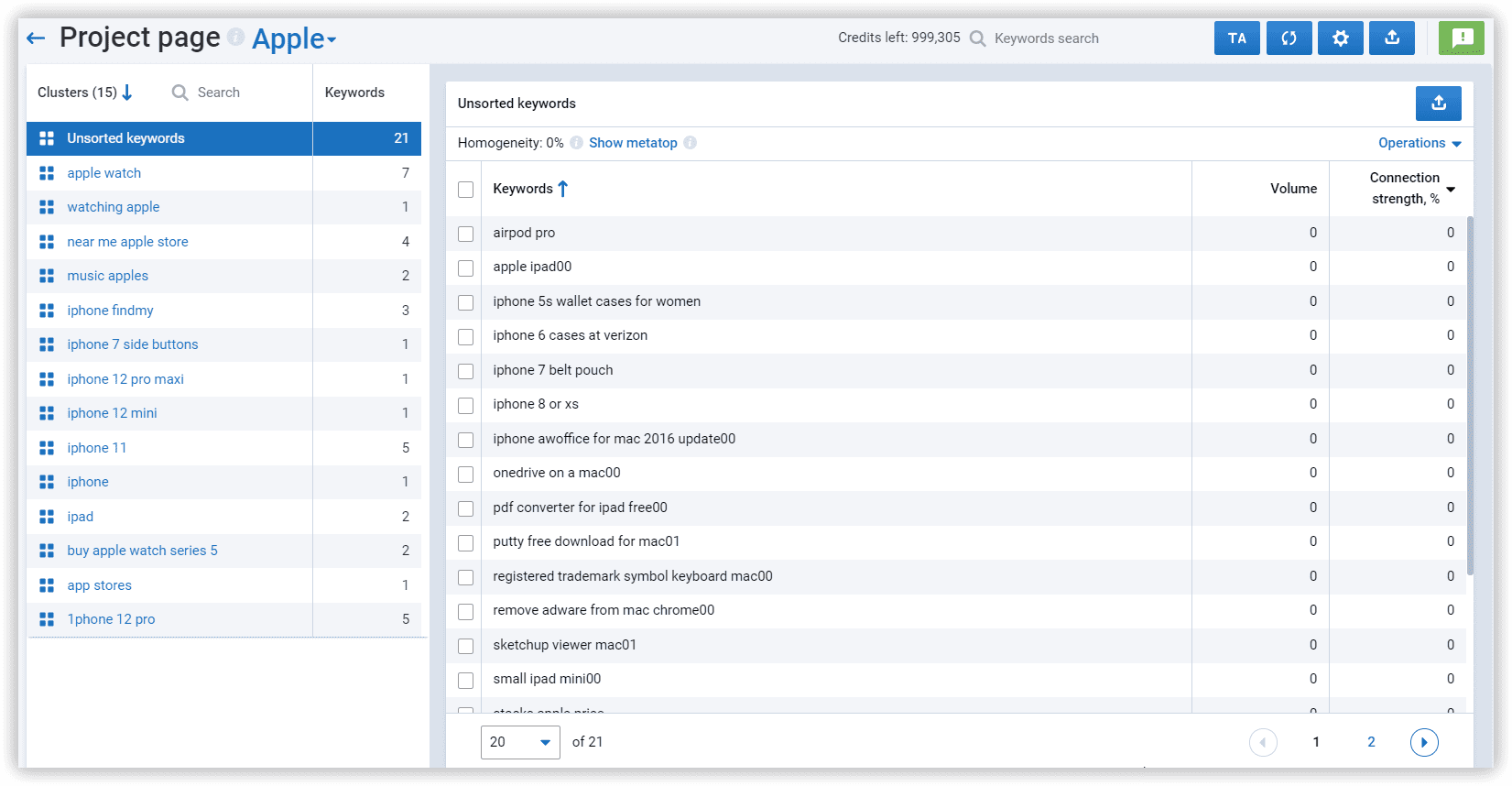
- the number of clusters in this project is displayed in brackets (1) next to the name of the "Clusters" column;
- the "Clusters" column displays the names of the created clusters (2);
- the "Keywords" column shows the number of keywords in the cluster (3).

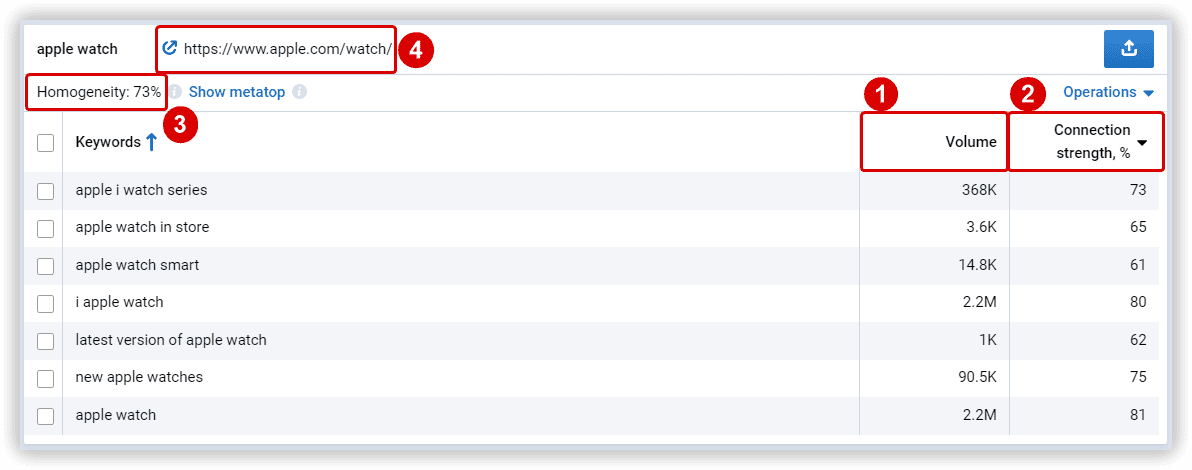
2. Every keyword has its connection strength. It shows how related to the cluster's subject this keyword is (from 0 to 100%).
3. Homogeneity shows the strength of connection between keywords (from 0 to 100%).
4. URL that ranks for the keywords in the cluster. If you add a domain while creating a project, we will display the URL which suits the cluster's subject the most. If you don't specify the domain, you can add URL manually when launching text analysis.

2. If you want to delete some keywords from the cluster, tick them and click on "Delete keywords".
3. The "Move to unsorted" button allows you to move selected keywords to the "Unsorted keywords" directory.
4. If you need to move selected keywords to the other cluster click the "Move keywords to..." button.
5. To delete a cluster, click on the "Delete cluster" button.

That's finally it! Try our new tool ;)
Speed up your search marketing growth with Serpstat!
Keyword and backlink opportunities, competitors' online strategy, daily rankings and SEO-related issues.
A pack of tools for reducing your time on SEO tasks.
Recommended posts
Cases, life hacks, researches, and useful articles
Don’t you have time to follow the news? No worries! Our editor will choose articles that will definitely help you with your work. Join our cozy community :)
By clicking the button, you agree to our privacy policy.